Please note: this event has passed
King's College London will open its doors once again for Open House London, the capital's largest annual festival of architecture and design, on Saturday 22 and Sunday 23 September.
King’s is connected to a wide variety of cultural spaces dedicated to these activities, from the Arcade at Bush House to the Museum of Life Sciences, with Science Gallery London opening its door for the first time during Open House weekend.
King's are also teaming up again with Somerset House to offer The Hidden Traces tour. Please check below for details.
Times and dates for each venue can vary. Please check below for details.
Great Maze Pond, SE1 9GU |Open Saturday and Sunday 10.00 – 18.00 (last entry 17.30)
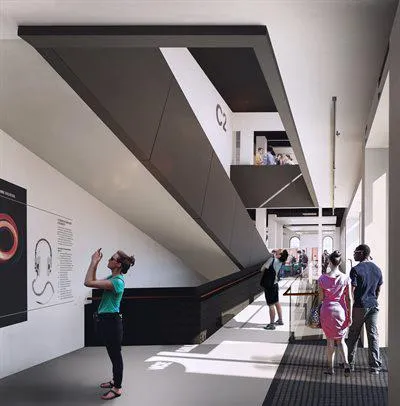
Art and science collide in the heart of the capital at King’s new permanent cultural venue – Science Gallery London. Launching on Open House Weekend 2018, the Gallery is located in London Bridge, just moments from the iconic Shard building.
Situated on the site of Boland House, part of the historic 18th century Guy’s Hospital, Science Gallery London has been designed by LTS Architects and features exhibition spaces, an auditorium, a café and a shop. During the project, the last undeveloped Georgian courtyard in London has been transformed from a car park into a newly-landscaped public square.
The first of its kind in the UK, Science Gallery London is a vibrant, creative hub where rigorous scientific research is made accessible to visitors young and old through innovative installations and a diverse programme of exhibitions and events.
Bush House: The Arcade and eighth floor terrace
Entrance via the Strand, WC2B 4PJ | Open Sunday 12.00 – 17.00 (last entry 16.30) | The Arcade Café will be open 12.00 – 17.00
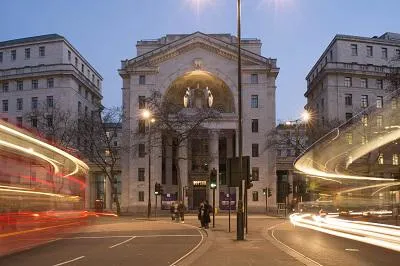
Situated between Aldwych and King’s College London’s historic Strand Campus, Bush House provides a home for many of King’s academic departments, as well as state-of-the-art learning and social spaces and enhanced student facilities. Built by Irving T Bush and designed by Harvey W Corbett, Bush House is a Grade II listed building. Made from Portland stone, its interior includes marble walls and Indian Hardwood flooring with Art Deco-style lobbies. The Aldwych entrance features American artist Malvina Hoffman's iconic statues symbolising transatlantic trade between Britain and the United States, sitting above the inscription ‘To the friendship of the English speaking peoples’.
The full complex opened in 1935 and its original function was as an international trade centre, including exhibition galleries, conference rooms, shops and a small theatre. Between 1941 and 2012 it was the home of the BBC World Service.
The Arcade, on the ground floor Bush House, originally contained a series of shops and business. Now part of the Cultural Quarter at King’s, it is home to a programme of events, installations and exhibitions, offering a forum where students, academics and visitors can engage with each other, as well as with artists and cultural partners. The south-facing terrace on the eighth floor provides views of the River Thames, Westminster, the London Eye and, to the east, St Paul’s Cathedral and the City of London.
Entrance via King’s Strand reception, WC2R 2LS | Open Sunday 12.00 – 17.00 (last entry 16.30)
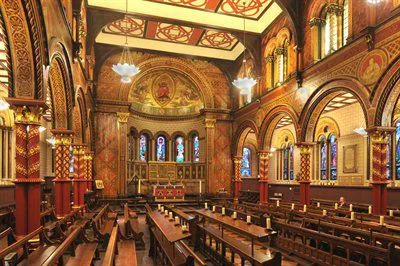
The College Chapel at King’s is a Grade I listed building designed by the eminent Victorian architect, Sir George Gilbert Scott. When the original College building (also Grade I listed), by Robert Smirke, was completed in 1831 it contained a more modest chapel in the same location. In 1859, King’s College Council approved a proposal that the Chapel should be reconstructed, agreeing that its ‘meagreness and poverty’ made it unworthy of King’s. Gilbert Scott was asked to make proposals; his scheme was accepted and the reconstruction was completed in 1864 at a cost of just over £7,000.
A comprehensive refurbishment project in 2000–2001 restored much of Sir Gilbert Scott’s design following changes in the mid twentieth century, and added newly-commissioned stained glass windows by Joseph Nuttgens. Further work took place this year to lay the wooden floor and improve the lighting system.
The ‘Father’ Willis organ dates from the 1860s. It was rebuilt in the 1930s with further additions in the 1970s and 1990s. In April 2017, the organ was removed for complete restoration in Mander Organs’ workshop, being reinstalled in summer 2018. The 2,500 pipes have been refurbished, as well as repainted and regilded, and a new console has been constructed. The Chapel remains at the heart of the university, providing a crucial spiritual focus for the King’s community with regular services, and is known and loved by staff and students past and present.
'Roman' Bath
Entrance via gate and stairs off Surrey Street, 5 Strand Lane, WC2R 2LS | Open Sunday 12.00 – 17.00 (last entry 16.30)
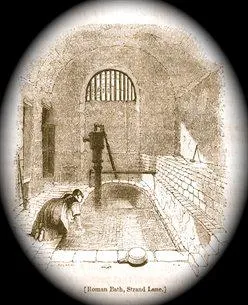
Owned by the National Trust, but now surrounded by King’s College London’s Strand campus, the 'Roman' Bath is one of London’s more enigmatic architectural relics. The idea that it is a Roman survival, passionately embraced by some though also always doubted, seems to go back only to the 1830s, and to have begun as an advertising gimmick. Before that, it was part of a (fairly) normal Georgian and Regency cold bath, opened to the public in or around 1776.
In origin it is in fact neither Roman nor even a bath, but a cistern, built in 1612 to feed an elaborate grotto-fountain in the grounds of old Somerset House, honouring James I’s Queen, Anne of Denmark. After the fountain was demolished, the cistern fell into disrepair – records show that it was still derelict in 1724 – and was only refurbished and brought back into use in the second half of the eighteenth century.
Please note this venue does not have step-free access.
Hodgkin Building, Guy’s Campus SE1 1UL | Open Sunday 11.30 – 16.30 (last entry 16.00)
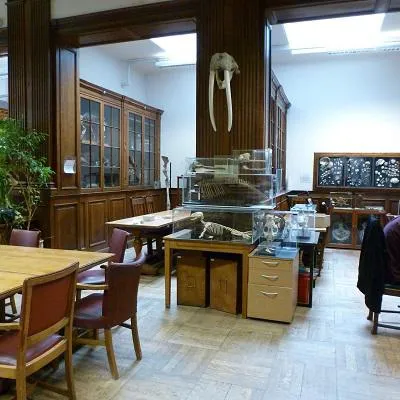
The Museum of Life Sciences at King’s College London celebrates the diversity of animal and plant life in the context of the biological and health sciences. Housed in an adapted wing of the Will’s Library in the Hodgkin Building at Guy’s Campus, the Museum brings together specimens that have been collected or donated to the College over many years. The Hodgkin Building was named after Thomas Hodgkin, the demonstrator of anatomical pathology, the former curator of the museum at Guy's Hospital Medical School and best known for the first account of Hodgkin's disease. The building is the original medical school building of Guy's Hospital
Specimens date from the early 19th century to the present and include skeletal material, fluid-preserved items, taxidermy, dried material, fossils and fossil casts, microscope and 35mm slides as well as a herbarium of plant material. They come from a variety of habitats around the world: from the arctic to the tropics and from the deep sea to the Russian steppes.
The Museum is on the corner of the Hodgkin Building adjacent to the entrance to the Henriette Raphael building. For access, please head for the Henriette Raphael building behind the beach hut. The Museum entrance is on the left.
The Old Operating Theatre Museum & Herb Garret
9A St Thomas St, SE1 9RY | Open Sun 10.30 – 17.00 (last entry 16.30)
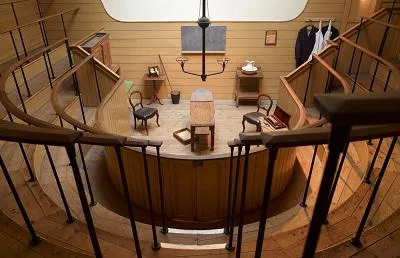
Housed in the attic of a 300-year-old church, the Herb Garret of St Thomas' Hospital was originally used by apothecaries to dry and cure herbs for the preparation of the patients' medicines. The oak-beamed Garret houses the Museum's collection and displays, illustrating centuries of medical and herbal history.
The Old Operating Theatre was built in 1822 in the attic of St Thomas' Church, and it remains a chilling reminder of the realities of surgery before anaesthesia and antiseptics. Crammed into the wooden tiers, the hospital's students would gather to watch the operations and observe surgical skills in what would later become the oldest surviving operating theatre in Europe.
Please note this venue does not have step-free access. Access to and from the museum is via a 52-step spiral staircase.
The Hidden Traces tour - Somerset House and King’s College London
23 September 2018 | 12.30 & 14.30
Meet in Seamen's Hall, South Wing, Somerset House
Tickets can be reserved from 10.00 on Monday 17 September 2018 on the Somerset House website.
There will also be a small number of tickets available on the day from the Information Desk, Seamen’s Hall from 11.00.
For this year's Open House, King's are teaming up with neighbours Somerset House to offer a special tour exploring the history of the site before the current building existed. Special highlights of the tour include the Archaeology Room and access to the 'Roman' Bath .
The Hidden Traces tour is step-free up to and including King's Quad, about 3/4 way through the tour. From that point, the route is unfortunately not step free or wheelchair accessible.
The tour will take approximately 75 minutes.
Throughout every faculty, partnerships with artists and cultural organisations enhance curricular and co-curricular learning and enrich research while serving the needs of the cultural sector and the communities around us: from tailored teaching, training and internship programmes, through research collaborations and cultural enquiries, to exhibitions and public events. These partnerships across arts and culture offer students new ways of learning, new networks and skills that increase employability and they inspire academics to approach and communicate research in new and imaginative ways.
Event details
Strand Campus
Strand, London, WC2R 2LS
